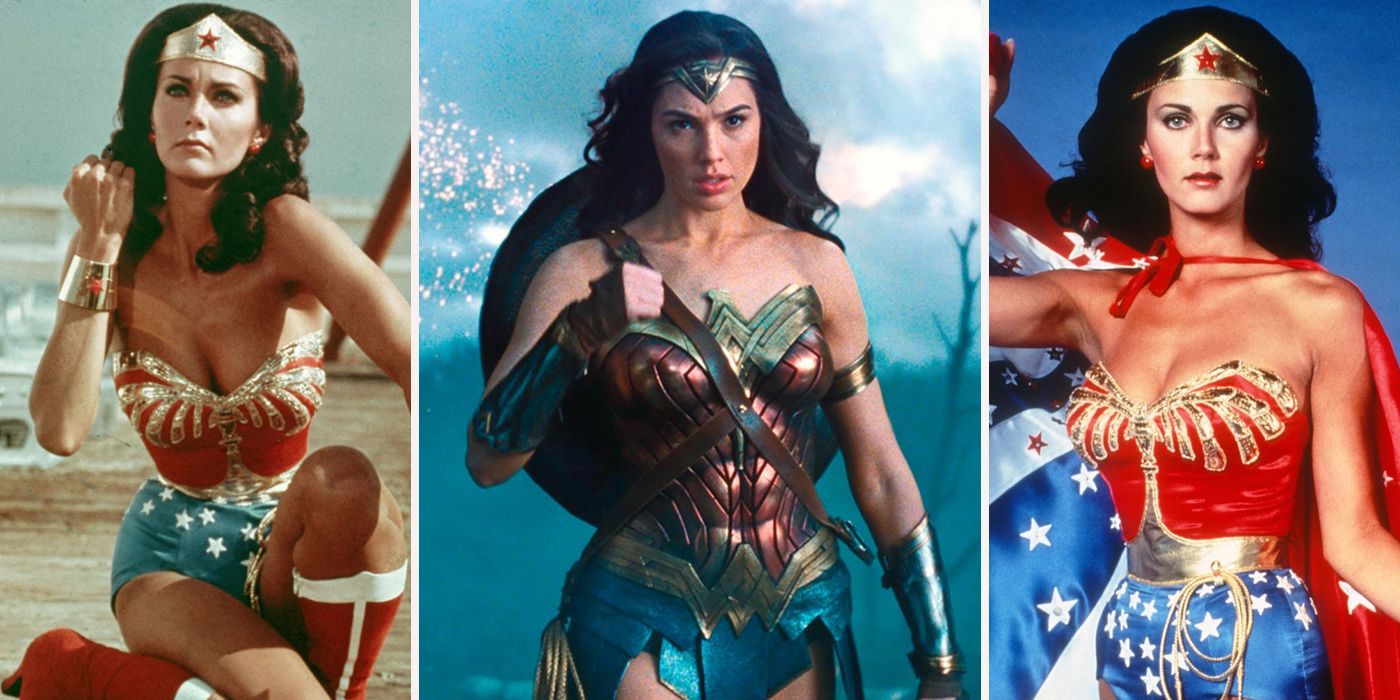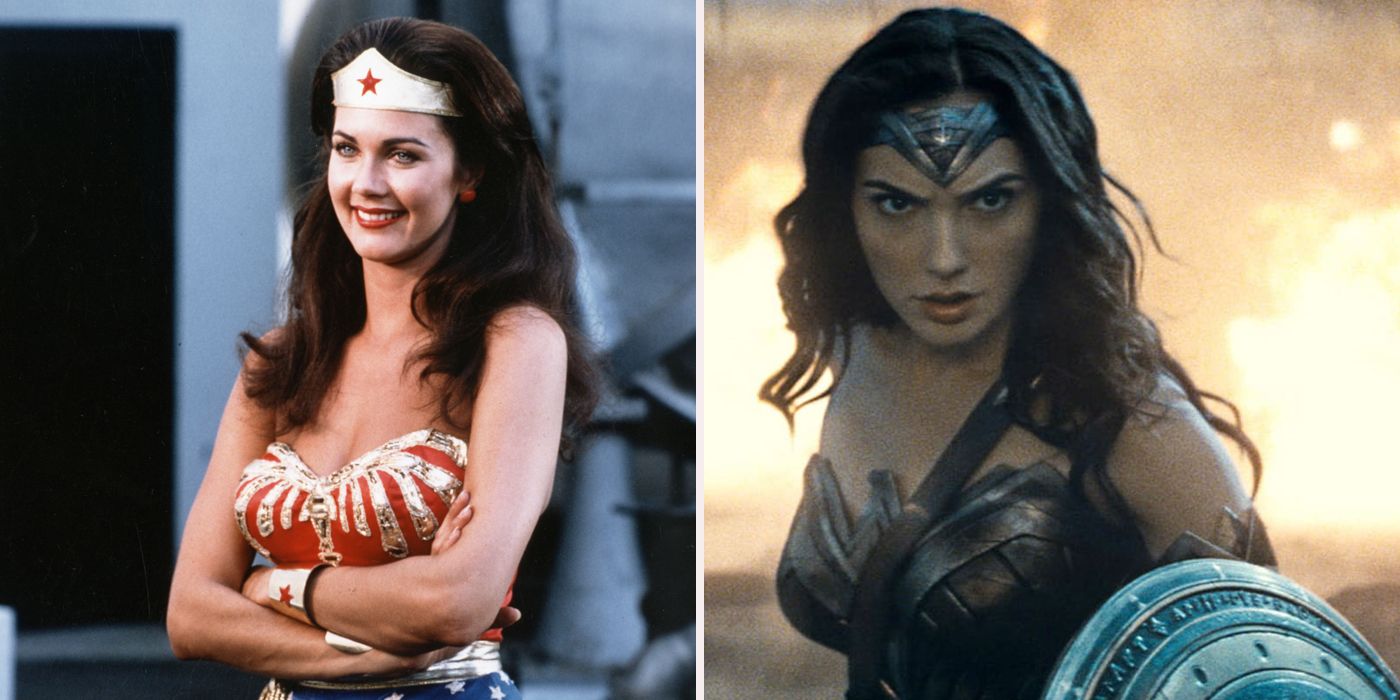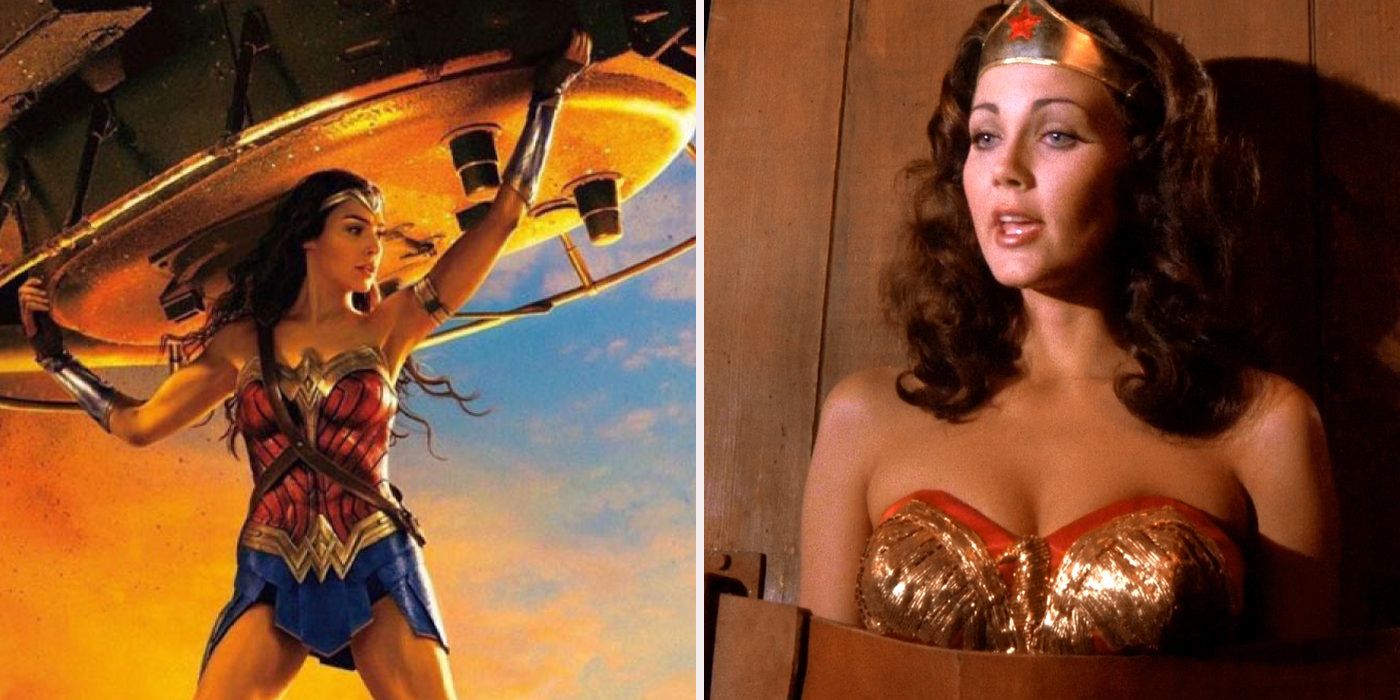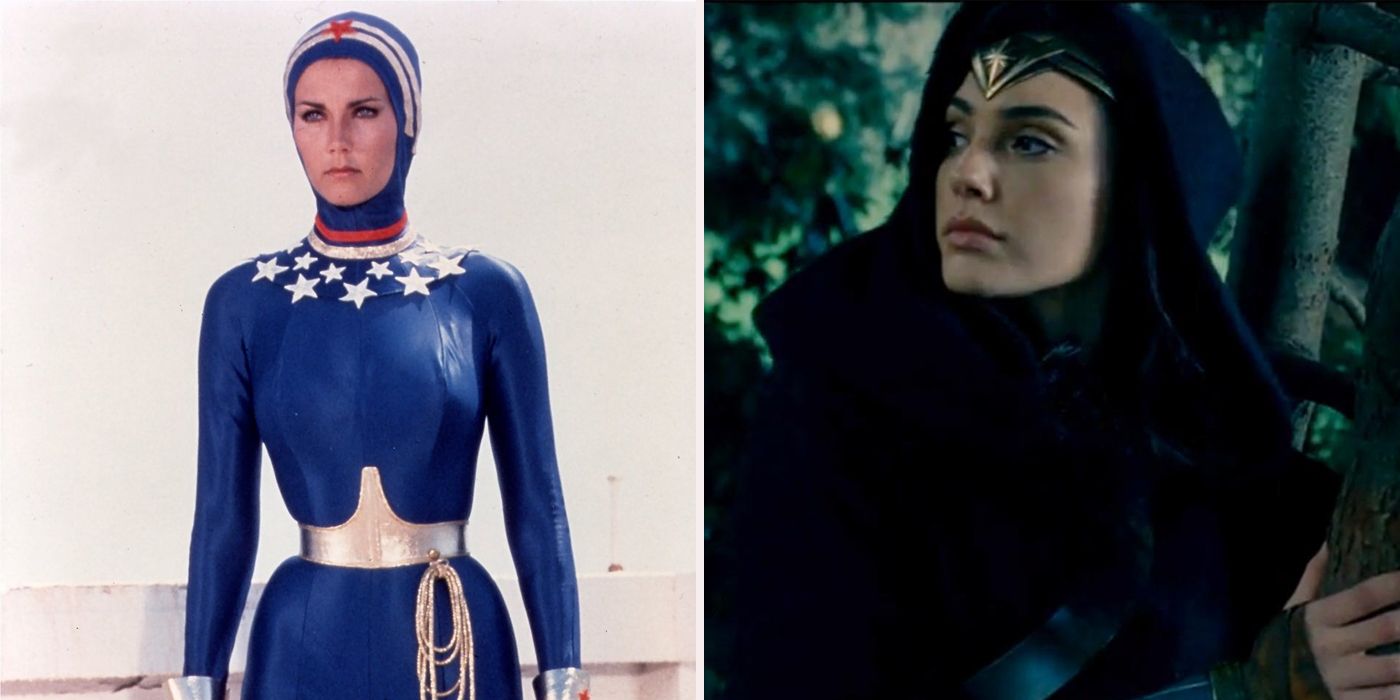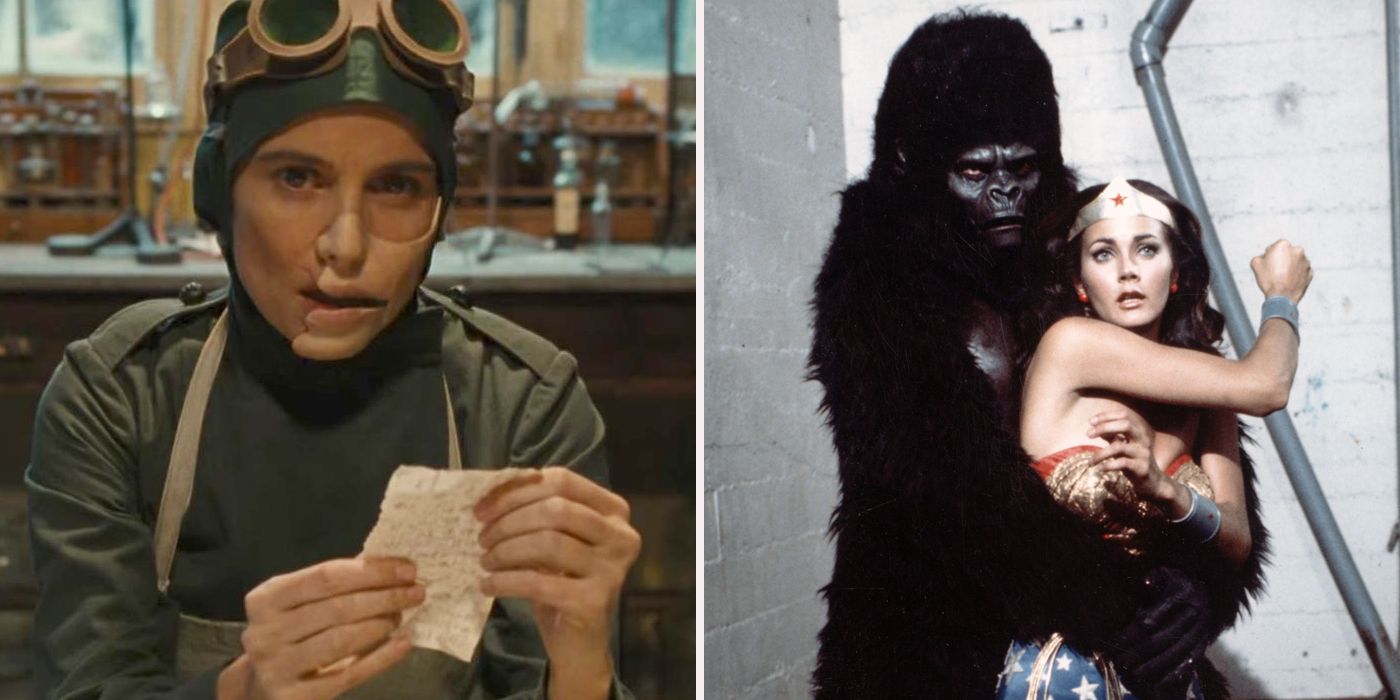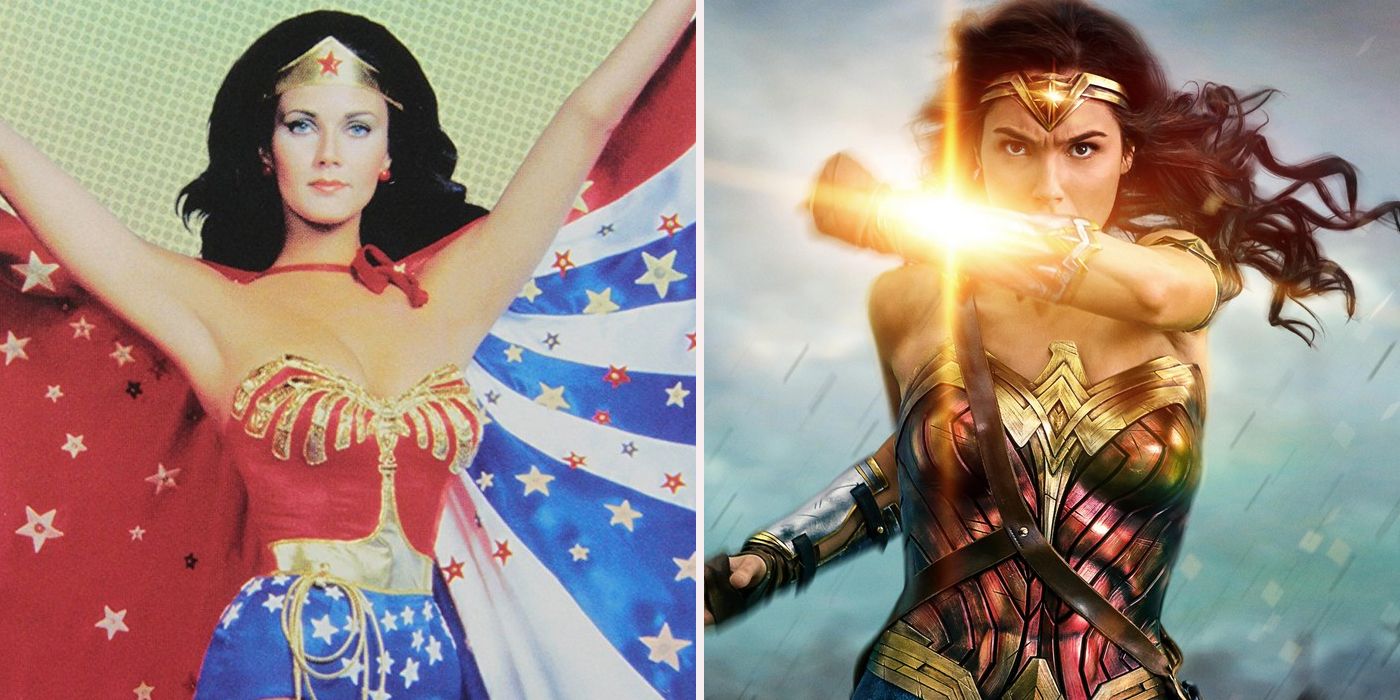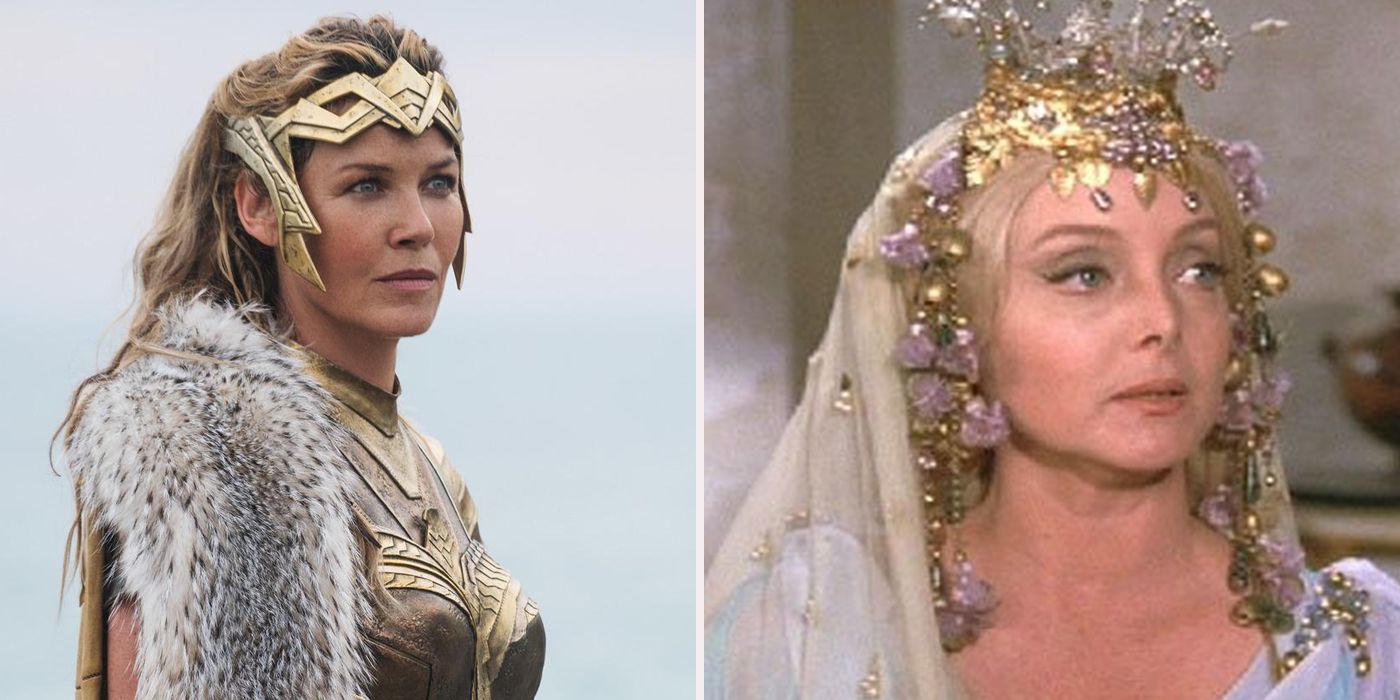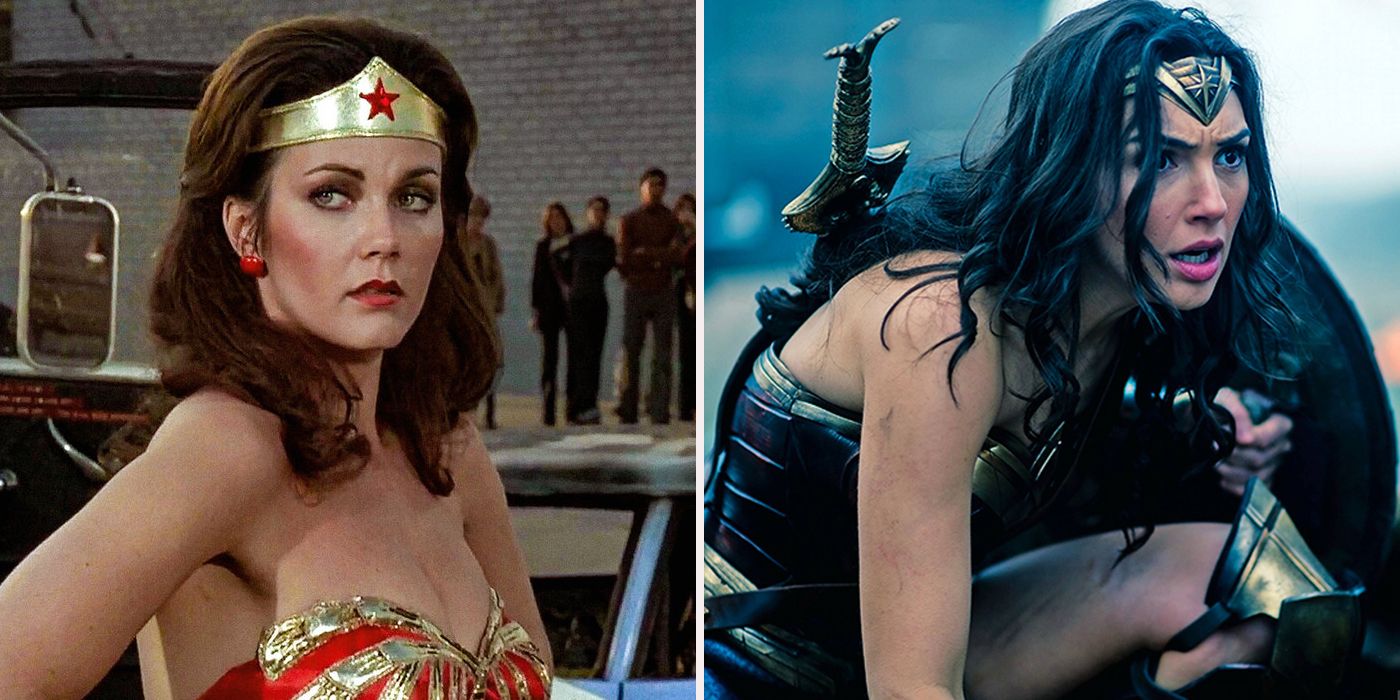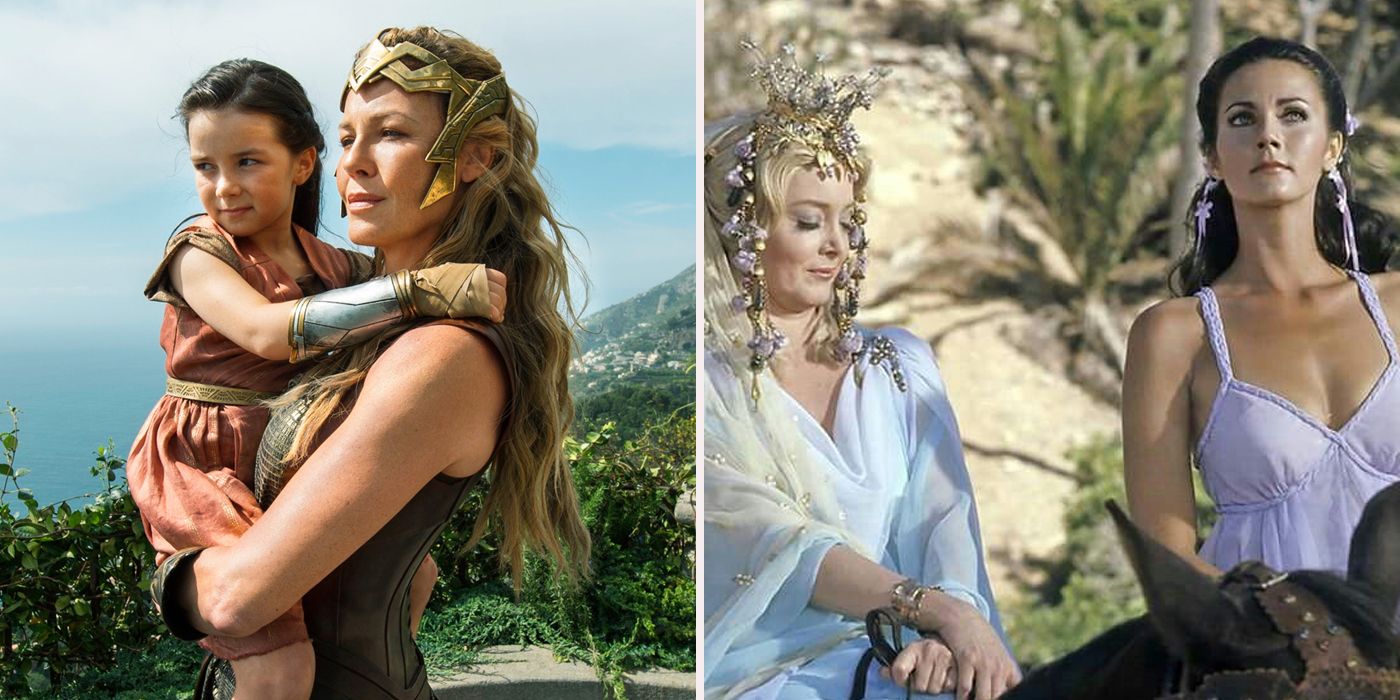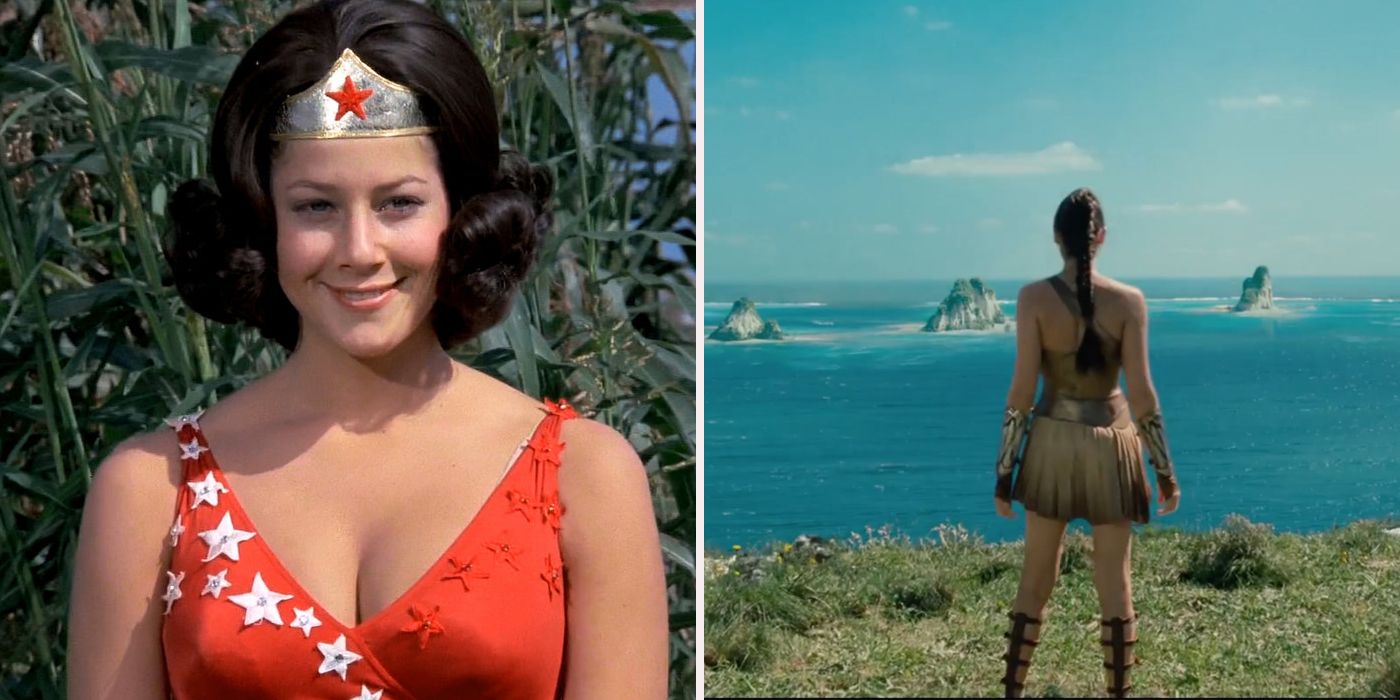Wonder Woman is not only one of DC Comics’ premiere superheroes, but her popularity is currently at an all time high. All around the world, new fans are being made, in part, thanks to the recent Wonder Woman movie. While the DCEU struggled for a couple years beforehand with critical reception, Wonder Woman took the reins and masterfully showed just how intriguing and emotionally satisfying a female-led superhero movie could be. When the Wonder Woman television series debuted in 1975, lasting for three seasons, it wasn’t initially met with critical acclaim.
After the first season and the show moved from ABC to CBS, people realized they were watching greatness. Lynda Carter’s performance as Wonder Woman would forever burn itself into the pop culture psyche; she’d never be forgotten. Both the TV series and the movie were incredibly unique and special in their own ways. The TV show didn’t try to be exactly like the comics and the film didn’t try to emulate the TV series. Like with anything, while they were both great, they were each superior to the other in certain categories. Today at CBR we’re looking at eight things that the TV show Wonder Woman did better than the movie, and seven that it did much worse.
15 BETTER: PRACTICAL EFFECTS
Moviegoers have come to appreciate the art of practical effects. In an age where CGI and gratuitous amounts of computer magic is at an all time high, it’s refreshing to see a creator’s vision that doesn’t rely solely on planet-sized explosions or digitally painted backgrounds. People love movies like Mad Max: Fury Road for a number of reasons, chief among them being nearly every crash and stunt is done without computer enhancement. The Wonder Woman movie got a little carried away with special effects, especially towards the final fight with Ares. All the sudden audiences were taken out of the emotional story as the movies went into a generic CGI stylized fight.
The Wonder Woman TV show, thanks to the age it was made, relied solely on practical effects. When you’re watching Diana restrain a car, you’re watching Lynda Carter doing her own stunts; making the mundane appear fantastic.
14 WORSE: ROMANCE
Romance has been a part of Wonder Woman comics since the character’s inception. While this was originally partly to keep the censors happy, it carried through; love would come to define Wonder Woman. Her love for Steve Trevor would be forever remembered. The love the two characters share is iconic and one of the greatest romantic relationships in all of DC Comics.
The Wonder Woman TV show unfortunately didn’t do an adequate job at portraying the feelings Diana and Steve had for each other. Rather than make him romantic partners, they would occasionally flirt, but kept things business-oriented. The Wonder Woman movie delved into the, albeit short-lived, love. The film doesn’t have Steve and Diana spending years together, but the time they do is poignant for both the audience and Diana; she’d carry the embers of Steve’s love for over a century.
13 BETTER: HUMOR
There’s no denying the glamour Gal Gadot’s Wonder Woman brought to the big screen. She’s elegant, strong, and maintains a very clear vision about what is right and what is wrong. She balances love and strength masterfully and it would be impossible to imagine the movie without her in the titular role. Yet despite Gal Gadot’s magnificence in embodying Wonder Woman, Lynda Carter’s version channeled all the above, but did so with a whimsical twist.
Gal Gadot’s Wonder Woman isn’t particularly funny. Rather it’s the movie itself or the situations she finds herself in that are humorous. Her naiveté is adorable, but Lynda Carter as Diana Prince added charm that wasn’t grounded in ingenuousness. Carter’s Wonder Woman was funny and not in an overly obnoxious way either. She didn’t necessarily crack jokes in the middle of combat, but her timing on delivering one-liners was second to none.
12 WORSE: POWER-SCALING
Superhero TV shows in the ‘70s and ‘80s definitely had a charm about them, but they struggled in one particular way: Wonder Woman is an incredibly powerful character and one of the strongest heroines in DC Comics. On the show, there were numerous inconsistencies with Wonder Woman’s power. One second she was stopping a bulldozer, then next she was struggling against thugs or an ape. It was difficult to understand the scope of her power.
The DCEU Wonder Woman had no such issues. From early on in the film, and especially once she leaves Themyscira, Diana’s power is highlighted in incredible ways. She’s lifting tanks, hitting hard enough to bring down buildings, and moving at super speeds. Except for her final bout against Ares and suddenly shooting him with lightning, her powers are otherwise very clearly defined.
11 BETTER: THE OUTFITS
Like many superheroes, Wonder Woman was prone to a wide variety of costumes. While some were purely cosmetic in nature, others served purpose. In the Wonder Woman film, Diana primarily remains in her ceremonial armor. There’s nothing wrong about the decision to do this, but the TV show featured Wonder Woman in her classic outfit, but also gave her a goofily fun wardrobe occasionally. The costumes may not have been always flattering, but they demonstrated the show wasn’t afraid to take risks; it didn’t have a problem with staying in accordance with the general silliness in comic books.
She had a motorcycle suit, a skateboarding suit, her blue wetsuit, which appeared on several occasions, and a couple other crazy costumes. Don’t lie, you’d love to see Wonder Woman on the big screen decked out in roller derby clothing and riding a skateboard!
10 WORSE: VILLAINS
The foes on the Wonder Woman TV show were a weird and eclectic bunch. You never knew if the episode you were watching would feature Wonder Woman fighting gorillas, gangsters, or bug-controlling super villains. It was weird, especially when there were plenty of wonderful bad guys already inhabiting the comic books. The Wonder Woman movie chose to ignore its predecessor in making up a goofy villain and went with some of Diana’s best know antagonists: Ares, the God of War and Doctor Poison.
In this day an age, fans all but demand there be recognizable villains on the big screen fighting their favorite superheroes. It’s a trend that’s now worked for decades. Hopefully with Wonder Woman 2 we’ll see other fan favorites likes Cheetah and Circe.
9 BETTER: ESTABLISHING THE FUTURE
The Wonder Woman TV show did more for the future of DC Comics and comic book centric movies and TV shows than we’ll ever know. Wonder Woman ran from 1975 to 1979 and lasted a total of three seasons. When ABC and Warner Bros. brought the Amazon Princess to TV screens everywhere, they opted to take a more traditional take on the character, akin to how she was presented in the days of her creator William Moulton Marston.
From there, Lynda Carter’s Wonder Woman became the stuff of legend. The show confirmed that both superheroes, and female superheroes at that, could and should be taken seriously. While the special effects might be a little iffy, Wonder Woman served as the building block for every DC superhero movie or TV show that followed. Without Wonder Woman, the superhero cinematic landscape would be significantly poorer.
8 WORSE: PRODUCTION VALUE
While the Wonder Woman TV show might have helped the superhero genre in terrific ways, the production value was not at all comparable to a big budget Hollywood blockbuster. Granted, when the TV series was filming, it ended up being quite expensive for the time it was shot in. Still, it is impossible to ignore cheap special effects or recycled footage. Unfortunately, they didn’t have CGI and super technology like nowadays. The Wonder Woman movie on the other hand, wasn’t limited in scope in what it could do.
The movie has great production value and looks absolutely stellar! The special effects are crisp, the battles dynamic, and everything generally works. Additionally, the Wonder Woman movie just looks good, unlike the TV show, which definitely doesn’t always hold up.
7 BETTER: BOLDER STORIES
With well over half a century’s worth of source material, Wonder Woman took many of the best elements from it’s long history and churned out a great, albeit somewhat generic, superhero story. The Wonder Woman TV show would take a radically different approach. The show would throw caution to the wind and do whatever the heck it felt like, uncaring about whether audiences were confused or not.
An interesting decision made was to set the first season of Wonder Woman during World War II, rather than World War I as seen in the film. In season two and three, the show jumped ahead several decades until we were in the ‘70s. A new assortment of unfamiliar characters accompanied Wonder Woman too. Additionally, while Steve Trevor was in the first season, his grandson fought alongside Diana in the following seasons. It was rather ambitious storytelling, but it worked.
6 WORSE: QUEEN HIPPOLYTA
There were multiple characters that stood out in the Wonder Woman movie. One of them in particular was Queen Hippolyta, Diana’s mother. Played by Connie Nielsen, she brought some much-needed dynamism to the role. While the TV show did have a Queen Hippolyta, she wasn’t much of a warrior or particularly intriguing. She sat on her throne and administered orders and edicts; there was nothing interesting about her.
Hippolyta in the movie was a different sort of ruler. She took a more hands-on approach in both governing her people and leading them into combat. This Hippolyta is a powerful warrior of a woman who also is a concerned and loving mother. In the relatively short amount of time she’s on screen, Hippolyta is a fully fleshed out character that’s simply amazing.
5 BETTER: BLAZING A TRAIL
In the annals of TV history, there are a number of shows that helped set the stage for entire genres, giving respectability to the medium. Wonder Woman was such a show. Without Wonder Woman other popular TV shows like Charlie’s Angels and countless other programs that emphasized female empowerment, probably wouldn’t exist. At the very least, the world of television would have turned out drastically different if Wonder Woman didn’t step up and prove to the masses that not only could a successful superhero TV show get made, but you have a successful female superhero TV show.
TV and movies, especially with the recent rise in women protagonists/heroes, owe a massive to debt of gratitude to Lynda Carter and Wonder Woman. The DC Comics show was a trailblazer program of the highest capacity.
4 WORSE: THEMYSCIRA
One of the best parts of the cinematic Wonder Woman wasn’t Diana wandering around clueless through the streets of London in a comical fashion, but the movie highlighting her youth and time on Paradise Island. The Wonder Woman TV show did show Themyscira, but it wasn’t terribly impressive and Diana was portrayed as an already grown woman. We never got to see her as child; her origin was rushed.
The movie version of Wonder Woman saw her entire origin explained. We see Diana as a kid, teenager, and then as a grownup. The audience’s time with Diana, Themyscira and its inhabitants are also examined in a closer light. The Amazons are rightfully depicted as incredibly skilled warrior women with an entire, rich culture of their own. The movie’s first act is downright mesmerizing.
3 BETTER: WONDER GIRL
The Wonder Woman comics are littered with incredible characters and one of the greatest is Diana’s stalwart ally, Wonder Girl. In the comics, few characters have as convoluted a history as Donna Troy. Ignoring the constant retcons Wonder Girl endured, Donna remains one of the most popular characters in Wonder Woman comics. The movie didn’t include Donna Troy, presumably because it’d be too much to fit in. Though we are getting a Teen Titans TV show, it’s unlikely we’ll see Donna unite with her mentor.
The Wonder Woman television show provided awesome fan-service when it featured Donna Troy. Granted, she went by the name Drusilla, but she maintained the Wonder Girl title. The Wonder Woman TV program introduced the concept of Easter Eggs, fan-service, and winks to the source material, years before it was popular and became mainstream in every subsequent superhero movie.
2 WORSE: THE SWORD OF ATHENA
Everyone loves a good sword fight. They’re also important in the Wonder Woman mythos. Growing up on an island of warrior women, the Amazons train incessantly. It’s their way of life. While they hope conflict never reaches their shores, they prepare for such incidents. The Wonder Woman TV show hardly depicted the Amazons training, instead showing them delegating the future of Wonder Woman. The movie demonstrated not only how Wonder Woman acquired all her fighting skills, but just how deeply swordplay is instrumental for Wonder Woman and the way she fights.
Even though it’s true that not every comic book version of Wonder Woman used a sword, but would rather take the more traditional approach of merely punching people, recent updates to the character have dictated otherwise. Regardless, it makes sense that a warrior from an old timey civilization would fight with an old timey weapon like a blade.
1 BETTER: DIANA
Lynda Carter’s portrayal as Wonder Woman in the television series became the standard to which every female superhero was held from the '70s forward. Carter brought charm, wit, a genuine kindness, and endearing humor to both the Amazon Princess and her alter ego, Diana Prince. You could believe this Wonder Woman would transform enemies into allies, especially with her disarming smile.
In a time when being a feminist was often looked down upon, Carter exuded feminism, while not alienating audiences. Carter showed class without camp, glamor without being overly provocative, and strength without being overpowering. Oh, and she sang too! If the Wonder Woman TV show had been made with another woman in the lead, then the future of the genre in TV and film wouldn’t be as appealing.

